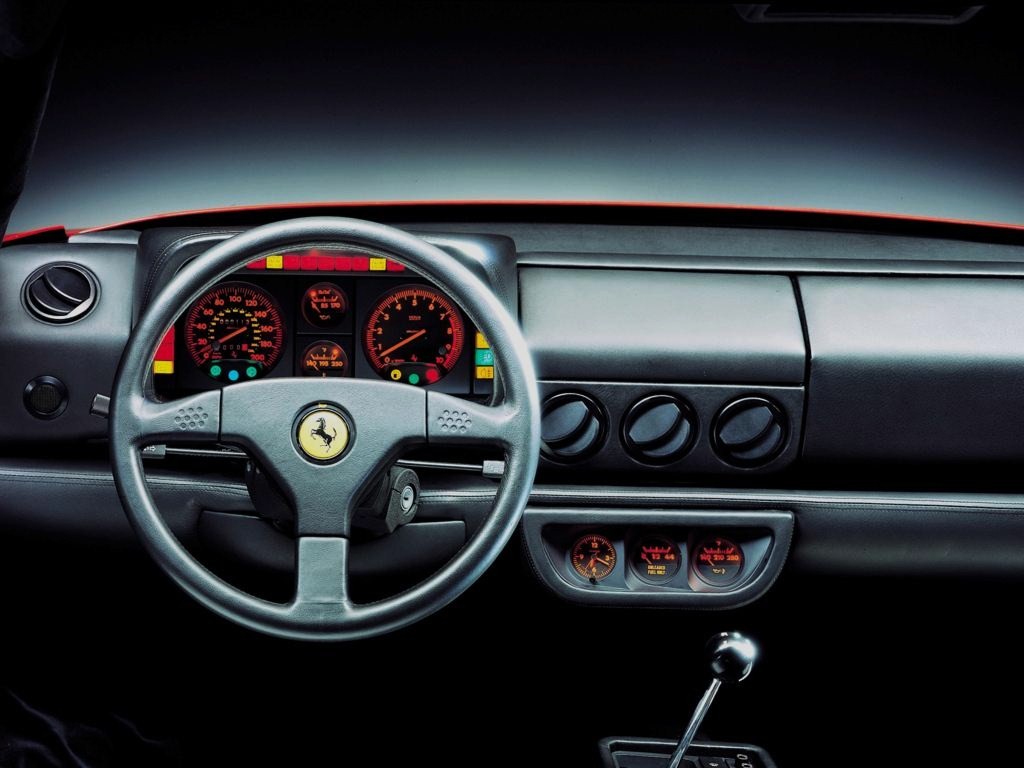






Going Twelve Rounds In Ferrari’s Boxer
Inline fours, straight and V-shaped sixes, bent eights, tens, and twelves are the popular kids of engine design, their many strengths and accepted weaknesses allow them first round draft status to the automotive engineering and design dodgeball team nearly every time. Last round ball-fodder consists of parallel twins, inline threes, pancake fours, the one-time-jock-turned-anime-club-president straight eight, and the motor equivalent of that guy who smelled like cat pee and talked to himself, the rotary engine. Boxer sixes tread the line between those two camps, with the 911’s role as the introverted and smart track star of sports cars a long-standing one. That leaves the rich home-schooled kid, the flat 12. Yep, the Ferrari 512BB and Testarossa are quite well-versed in animal husbandry and think the world is flat, but are too well-bred and wealthy for anyone to dare not invite them to the party.
Ferrari first began experimenting with the flat 12 in the early ’60s as a way of lowering a car’s center of gravity by concentrating mass across a horizontal plane. The 512 F1, equipped with a 1.5-liter version of said configuration failed to impress in its inaugural and only racing season, with a best result of two second-place finishes in 1965. Half a decade would pass before Ferrari again built a horizontally-opposed 12 cylinder, this time in the forms of 1970’s 312B Formula One machine and the following year’s 312PB prototype racer. Around this time Maranello began work on a flat-12 road car as a way to capitalize on the unique design they’d nurtured to infancy, and the 365 GT4 BB was unveiled at 1973’s Paris Motor Show, the world’s first production car thus powered and simultaneously Ferrari’s first mid-engined street machine.



Designed by Fioravanti under the umbrella of Pininfarina, the BB was a huge step not only technologically, but also stylistically, as it bore virtually no resemblance in either category to its predecessor, the legendary and gorgeous, front-mounted V12 Daytona. “BB” designated “Berlinetta Boxer”, though technically the new 12-cylinder was no more a boxer than it was a Dalmatian—the term “boxer” refers to a flat engine with opposed pistons that run on separate crank pins, a layout which results in said pistons meeting in the middle at bottom dead center, or “boxing” each other once every engine revolution—think VW, Porsche, and Subaru, their distinct offbeat exhaust notes born of this unique configuration. Ferrari’s flat 12, on the other hand, used common crank pins for opposing cylinders resulting in what is more correctly termed a 180 degree V12… all of which is more than a little bit pedantic, so go ahead and call it a “boxer”, I still do. The 387 365 GT4 BBs were built before their replacement by the 512 BB in 1976, itself essentially a thorough update of the 365. Externally, the 512 is distinguished by four rear taillights instead of six, a new front spoiler, wider rear tires, added ducting, and other detail changes. Inside, the motor was punched out from 4.4 to 4.9 liters and gained dry sump lubrication. The year 1981 saw the introduction of the 512 BBi, which gained fuel injection and other improvements. Built until 1984, its replacement is arguably the best-known flat 12 Ferrari ever built, that famous (or infamous, depending on your point of view) symbol of eighties ambition and excess, the Testarossa.
Six-and-a-half-feet wide with toddler-length cheese grater intakes feeding radiators on either side, and most often painted in standard Ferrari red or cocaine white, the Testarossa was nothing if not brash. Mid-mounted in its chassis was a 48 valve evolution of Ferrari’s “boxer” twelve layout, again displacing 4.9 liters and featuring a dry sump. Despite its over-the-top image and reputation for ridiculously expensive maintenance, even by F-car standards, the Testarossa, and its later 512 TR and 512 M iterations, are regarded as perhaps the best-driving 12 cylinder supercars of the era, with handling, ease of use, refinement, visibility, and comfort all on a different echelon relative to the truculent and ornery Countach.
The 512 M was eventually replaced by 1996’s 550, a car built as a kind of tribute to the original Daytona and ushering in again a long-standing preference among Maranello for twelve cylinder flagships with cylinders arranged in a vee in front of the driver’s feat rather than splayed low behind their backs. Ultimately, then, the boxer 12 proved an evolutionary dead-end—good thing it never believed in Darwinism anyway.






Image Sources: autodrome-cannes.com, blastblatant2508.blogspot.de, alphacoders.com, carcabin.com, carinteriors.tumblr.com, autoneuroticfixation.com, mad4wheels.com





